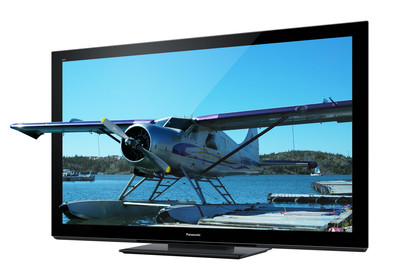THX: 3D TV adoption at home is inevitable
But 3D content is "sorely needed" says Rick Dean at THX
Dean admits that he can detect a little bit of difference between active and passive 3D TVs, but insists, "It doesn't affect how the movie comes through."
"Ghosting is what really disturbs me," says Dean. "Most consumers don't know what it is, but it can be very tiring. That's not entertainment and that's not the reason why movie directors slave over trying to create a certain effect." Cue THX 3D Certification, a relatively new feature found on 3D TVs that seeks to level the playing field.
As Governor of the Society of Motion Picture and Television Engineers in Hollywood and chair of the 3D@Home Consortium, what Dean is trying to achieve is uniform quality.
And that's exactly what his latest idea, THX Media Director, is all about. It's essentially some metadata stored on compatible Blu-rays discs and DVDs that talk to compatible displays to optimise the TV automatically.

NO FUSS: If THX Media Director catches on fiddling with picture settings could be a thing of the past
"With so many modes there's a big chance the TV will be in the wrong mode," says Dean, "but it's a chicken and egg thing to get Media Director launched; the studios want to see the devices, and the device guys want to see the content done first. We've had to move it bit by bit over the past few years."
It's not just for TVs and Blu-ray players. THX Media Director also applies to other components around the 3D home, such as AV receivers. "Onkyo is on board with THX Media Director as well as display manufacturers including Sharp, Panasonic and LG; we're anxious to see these devices come out."
Sign up for breaking news, reviews, opinion, top tech deals, and more.
Armed with a new benchmark for creating uniform picture quality, Rick Dean is positive about the 3D future.
"3D will continue to make a fruitful market," he says. "How many times have we said 'this is the best we can go - it won't get better'? Things will always improve."

Jamie is a freelance tech, travel and space journalist based in the UK. He’s been writing regularly for Techradar since it was launched in 2008 and also writes regularly for Forbes, The Telegraph, the South China Morning Post, Sky & Telescope and the Sky At Night magazine as well as other Future titles T3, Digital Camera World, All About Space and Space.com. He also edits two of his own websites, TravGear.com and WhenIsTheNextEclipse.com that reflect his obsession with travel gear and solar eclipse travel. He is the author of A Stargazing Program For Beginners (Springer, 2015),